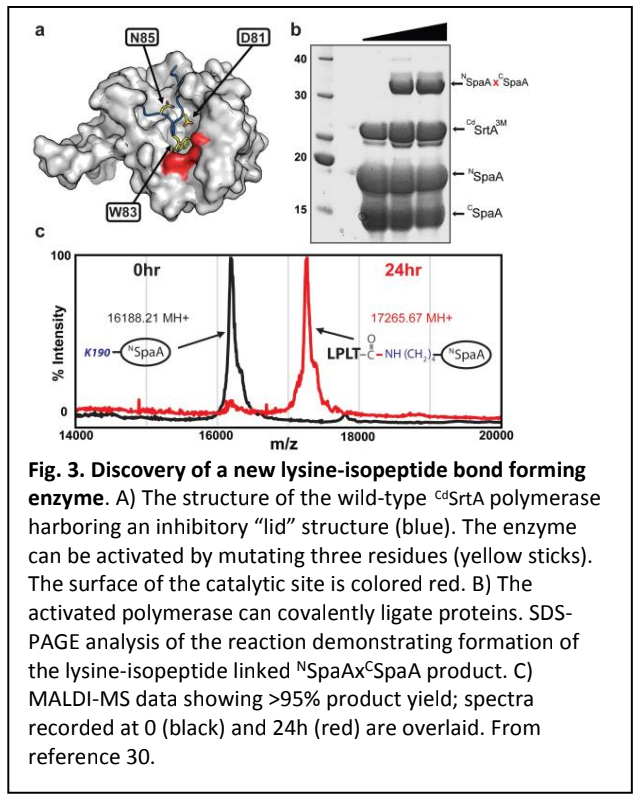
James Bowie

David Eisenberg

Todd Yeates
The Bowie, Clubb, and Yeates research team is developing new technologies to carry out important biosynthetic and biodegradation reaction schemes in vitro through the design of novel pathways and enzyme systems. Current applications of our emerging research range from advanced synthetic schemes for producing biofuels and high value chemicals, to the design of novel enzyme assemblies for performing sequential cellulose degradation reactions.
Extracting complex pathways from the cell for in vitro applications offers important advantages. These include the ability to mix and match enzyme components, fine tune reaction conditions and stoichiometries, and eliminate cytotoxic effects that often constrain in vivo biosynthetic schemes. Re- engineering or repurposing natural systems for in vitro use also introduces special challenges such as energy and cofactor balance, enzyme stability, product separation, and optimal spatial organization of enzymes. In addressing these key synthetic biochemistry challenges, our recent DOE-funded efforts have led to a number of exciting advances, as described in our Progress Report and in the preliminary data for our proposed ongoing research efforts.

Our team brings valuable and complementary expertise to bear on this broad research area. Bowie has pioneered the development of complex in vitro pathways for the biosynthesis of a wide range of chemicals in recent work. The pathways he has developed set the stage for much of the work proposed for this project on optimizing performance through further pathway and enzyme design, with the ultimate goal of low-cost, sustainable green synthesis of diverse chemicals. Clubb has been exploiting his expertise on the bacterial sortase system to develop exciting new enzyme-based ligation strategies for covalently linking proteins and enzymes together in prescribed arrangements. The organization of multiple cellulose degrading enzymes on designed protein cage scaffolds from the Yeates lab represented an early test bed for that ligation work. For our next efforts, the Clubb and Yeates groups will be testing several new approaches for conformationally stabilizing and geometrically organizing key enzymes in the pathways under development by the Bowie group. We anticipate this project will lead to further improvements in the biosynthesis of important fuels and chemicals, while simultaneously opening new avenues for enzyme
design and pathway engineering.



